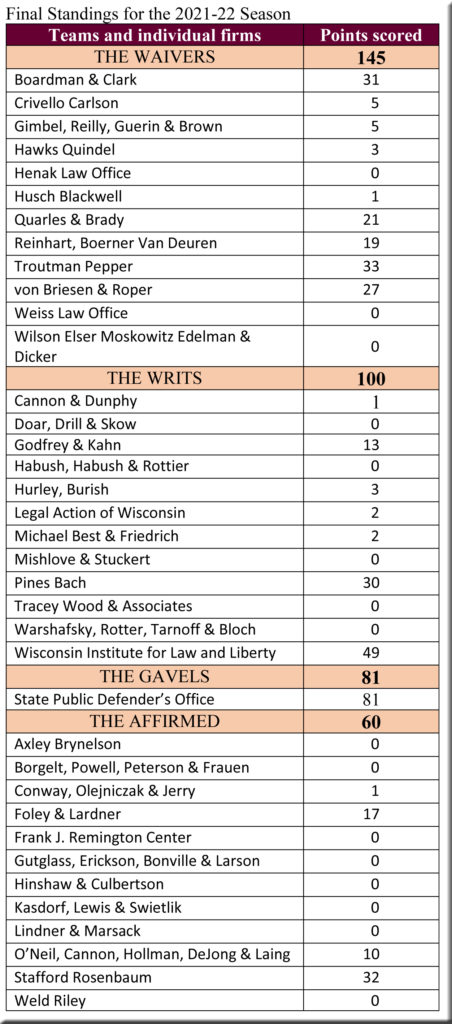Not long after the Gavels from the State Public Defender’s Office won the league title for the sixth straight year in the summer of 2021, the Competition Committee disbanded one of the other teams and distributed its law firms among the three remaining contenders, hoping to create more worthy opponents for the Gavels. During the 2021-22 season it became clear that these efforts had succeeded, as two of the enhanced teams pulled away from the Gavels, leaving them to finish in third place.
Was this a fluke? With the 2022-23 season now underway, we are about to find out. As in the past, scoring summaries will be posted here later this month, with weekly updates following until the season concludes in July. Meanwhile, fans can click on the corresponding links to view the scoring rules and the full team rosters of competing law firms.
